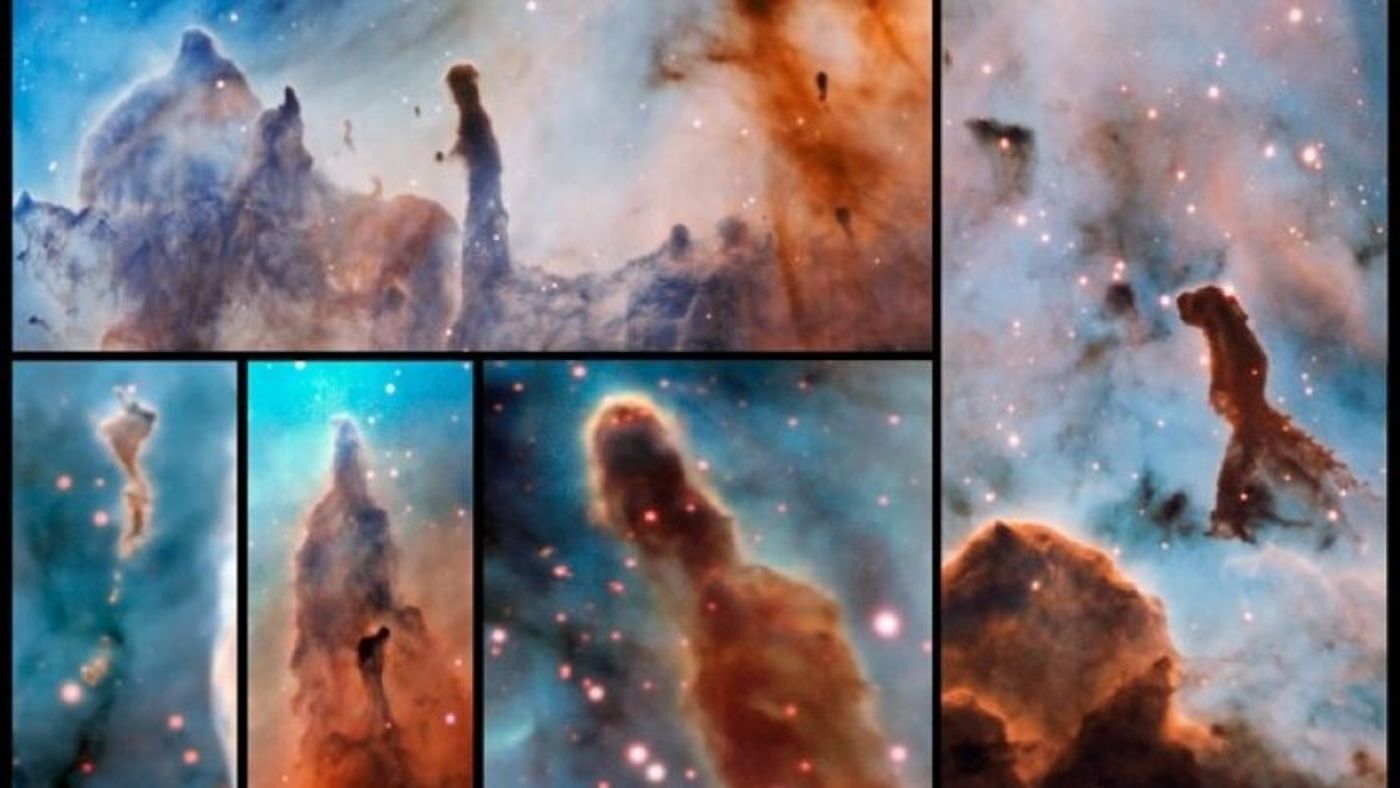These Magnificent Space Pillars Are Being Destroyed by Stars
Using the MUSE instrument on the European Southern Observatory’s Very Large Telescope, international astronomers have peered into the viewfinder to spy on pillar-like structures that look a lot like the Pillars of Creation from the Eagle Nebula.

Image Credit: ESO/A. McLeod
On the other hand, these new pillars, which are found in the Carina nebula some 7,500 light years away, are not being ‘created’ like those in the Eagle Nebula. Rather, they’re being destroyed. They’ve been nicknamed the Pillars of Destruction with this quality in mind.
A paper published in the Monthly Notices of the Royal Astronomical Society details this spectacular finding by doctoral student Anna McLeod and her team.
Ten pillars in total were discovered in this region of the sky, and interestingly, the nearby stars are said to impact them in a destructive way.
These stars were formed by the very same hydrogen gas and dust that makes up these pillars, but as the stars are created, the ionizing radiation from them strips away the electrons of the atoms making up the pillars. This process is known as photoevaporation.
The stars themselves, born from the materials that make up these finger-like structures, were concluded to be the result of the loss of mass in the gaseous and dusty pillars, as there was a link in the dissipation of the pillars and the ionizing radiation from the nearby stars.
If it sounds a little bit ungracious of the newborn stars to destroy the materials that helped form them in the first place, you’d be right, but that’s just the way the cookie crumbles when it comes to space physics.
At this point in time, there’s not enough data to tell whether or not the Pillars of Destruction will soon be destroyed in full by the nearby stars, but it’s believed that MUSE is the right tool for the job, as future observations like this one are going to be the only way to find out for sure.
MUSE takes many photographs at different wavelengths of light, so although the images aren't as crisp as those taken by the Hubble Space Telescope, they show a lot more data.
By comparing the data we have now to the data we collect in the future, we can see how the pillars transform over time and solidify or debunk the theory.
Source: ESO via Space.com








